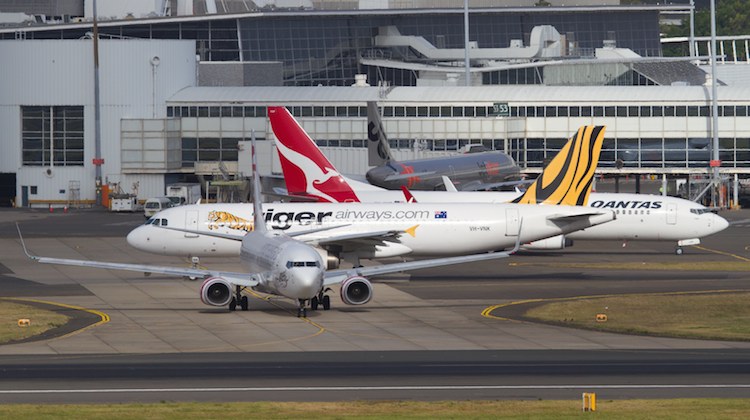
Ticket prices for domestic business class and discounted economy fares were higher in January, new figures show.
The Bureau of Infrastructure, Transport and Regional Economics (BITRE) measure of domestic business class airfares was at 95.2 index points in January, up from 94.7 points a year earlier. The measure has risen for the past 17 months on a year-on-year basis.
In December 2016 it was at 97.6 points, the highest level since reaching 107 points in November 2011.
The figures were a further indication the corporate and government travel sector was getting back on the road after being on pause in the months around the 2016 federal election and some of the global and local economic jitters of recent times.
Similarly, the best discount economy index was also up in January at 59.6 points, compared with 54.8 points in January 2016.
By contrast, the BITRE measure of airfares for restricted economy was at 79.8 points, down from 80.9 points a year earlier.
The BITRE air fare series is a price index of the lowest available fare in each fare class, weighted over selected routes.
Both Australia’s major carriers Virgin and Qantas have cut domestic capacity in recent times in an effort to improve yields and better match the number of seats in the market with demand.
Indeed, passenger figures from the International Air Transport Association (IATA) show capacity in the Australian domestic market, measured by available seat kilometres (ASK), had grown just 0.2 per cent in the year to November 2016, the latest figures for which data is available.
Demand, measured by revenue passenger kilometres (RPK), had risen 1.7 per cent in that time, resulting in load factors rising 1.1 percentage points to 76.8 per cent.
“Seasonally-adjusted traffic broadly tracked sideways throughout 2016, and has trended upwards at an average pace of just 1 per cent over the past four years or so,” IATA said of the Australian domestic market.
More broadly, international passenger RPKs grew by 7.6 per cent in November 2016, compared with the prior corresponding period.
The result was a nine-month high and up from 5.6 per cent growth in RPKs in October, IATA said on Wednesday (European time).
IATA chief executive and director general Alexandre de Juniac said the figures reflected “a pick-up in the global economic cycle”.
“As the stimulus effect of lower oil prices recedes in the rear view mirror, the strength of the economic cycle will play a key role in the pace of demand growth in 2017,” de Juniac said in a statement.
However, de Juniac cautioned that despite the strong growth in passenger traffic and the impressive financial results of the industry as a whole – airlines’ return on invested capital was expected to exceed the cost of capital for the third straight year in 2017 – there were dangers lurking.
“Travel has never been more accessible – with great fares, many options and more destinations,” de Juniac said.
“Nevertheless uncertainty lies ahead. The threat of terrorism, questions over the durability of the economic upswing, rising oil prices and increasing protectionist rhetoric are among the concerns.
“The industry has reshaped itself and strengthened its resilience to shocks. We should see another solid year of collective profitability for the airlines in 2017. But we must be vigilant.”










